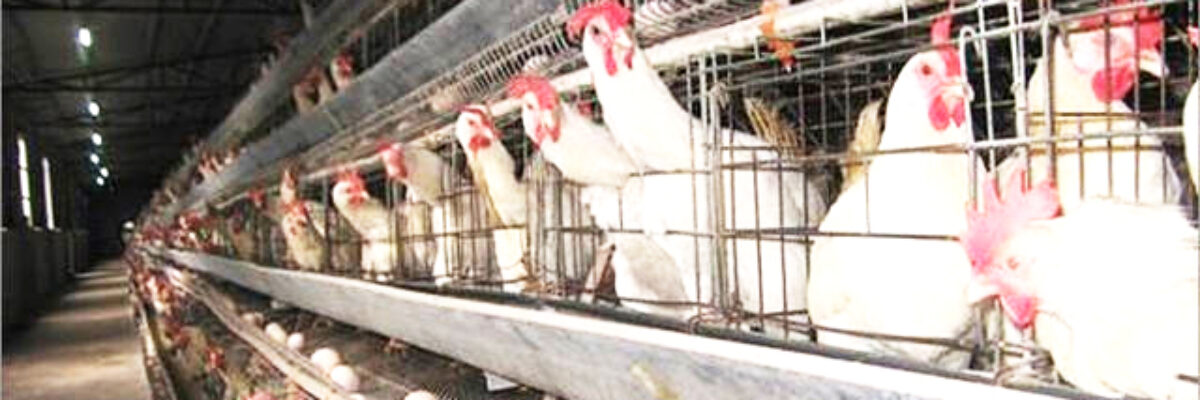Categories
Recent Posts
- Do these 7 things in spring pig breeding to reduce the number of pigs getting sick!
- Five ways to save money raising sheep!
- How to treat piglets without food? How do piglets lose weight without eating?
- In spring, the incidence of rumen food accumulation in cattle is high, pay attention to strengthen prevention and control!
- How to treat the fecal water of pig farms? These methods are worth learning
- What are the characteristics of black nose sheep? What food does black-nosed sheep not eat?
- Six things must be done to raise cattle in spring!
- What are the symptoms of cattle anthrax? Will cattle get sick after using anthrax vaccine?
- Summer is hot! How to prevent heatstroke and reduce the temperature of dairy cows?
- What is the reason for lack of manganese in cattle? What should cattle do if they lack manganese?
How many soft-shell eggs and broken eggs? Chicken salpingitis is treated like this!

The most common problems after a chicken has salpingitis are low egg production rate, no peak egg production period, no egg production, soft shell eggs, and more broken eggs. So what is the salpingitis of laying hens? What are the symptoms? How to prevent and treat it?
Analysis of the etiology of salpingitis in chicken
- The sanitary condition of the poultry house is too poor, and the cloaca is contaminated by bacteria and invades the fallopian tube, such as Salmonella pullorum, paratyphoid bacillus, Escherichia coli, etc.
- Feeding too much animal feed, laying too large or double yolk eggs, sometimes the egg shell breaks in the fallopian tube, damaging the fallopian tube;
- Stress factors: laying hens are very sensitive to changes in the environment. If the hens encounter catching, immunization, refueling, water cut-off and strangers enter the hen house when laying eggs, abnormal sound, color, etc. can cause panic and stress in the chickens. Laying hens are also a strong stress to laying hens at the beginning and peak of laying.
- Various avian diseases: such as mild avian influenza, mild Newcastle disease, infectious bronchitis, avian leukaemia, and egg drop syndrome
- Excessive laying of eggs and lack of vitamin A, D and E in feed can lead to salpingitis.
Clinical symptoms of chicken salpingitis - The laying hens die suddenly or have low egg production, there is no peak egg production, the peak egg production time is short, the oviduct is congested, bleeding, edema, there is a large amount of secretion or case-like lumps in the oviduct, the follicles are denatured and necrotic, and the thin shell eggs, soft shell eggs, sandy eggs, and the egg shell color turns white.
- The appearance of the flock is normal, but there is no peak period for egg production
- The diseased chicken has thick, bright red crown and sagging abdomen
- The follicles of most diseased chickens develop normally. There are 6-7 mature eggs in the abdominal cavity of some chickens, but there is no complete functional fallopian tube, unable to lay eggs, and other organs are normal
- There are blisters of different sizes in the fallopian tube, the large ones are more than 600 ml, and the small ones are several ml. Water is cool, colorless, transparent and tasteless liquid. Some chickens have no hydrops in their fallopian tubes, but have blind ends or narrow fallopian tubes or no fallopian tubes.
Treatment of chicken salpingitis
(1) Antibiotic treatment. Amoxicillin soluble powder can be mixed for drinking at a concentration of 50-100 mg/L for 3 to 5 days. At the same time, adding cod liver oil can improve the quality of eggshell. Mix 100g cod liver oil with 1000kg water for laying hens to drink freely; It can also be fed evenly with mixed feed, adding 100 grams of cod liver oil to 500 kg of feed. It should be noted that the drug withdrawal period for laying hens using amoxicillin is 1 week, and the eggs produced during this period cannot be marketed.
(2) Chinese medicine treatment. Use 24 grams of rhubarb, 20 grams of Folium Isatidis, 16 grams of scutellaria baicalensis, 8 grams of forsythia suspensa, 5 grams of Chuanxiong, and 5 grams of motherwort. Crush the upper medicine, sift it through 40-50 mesh sieve, mix it evenly into the feed in the proportion of 0.5% – 0.8%, and feed it continuously for 5 days.
